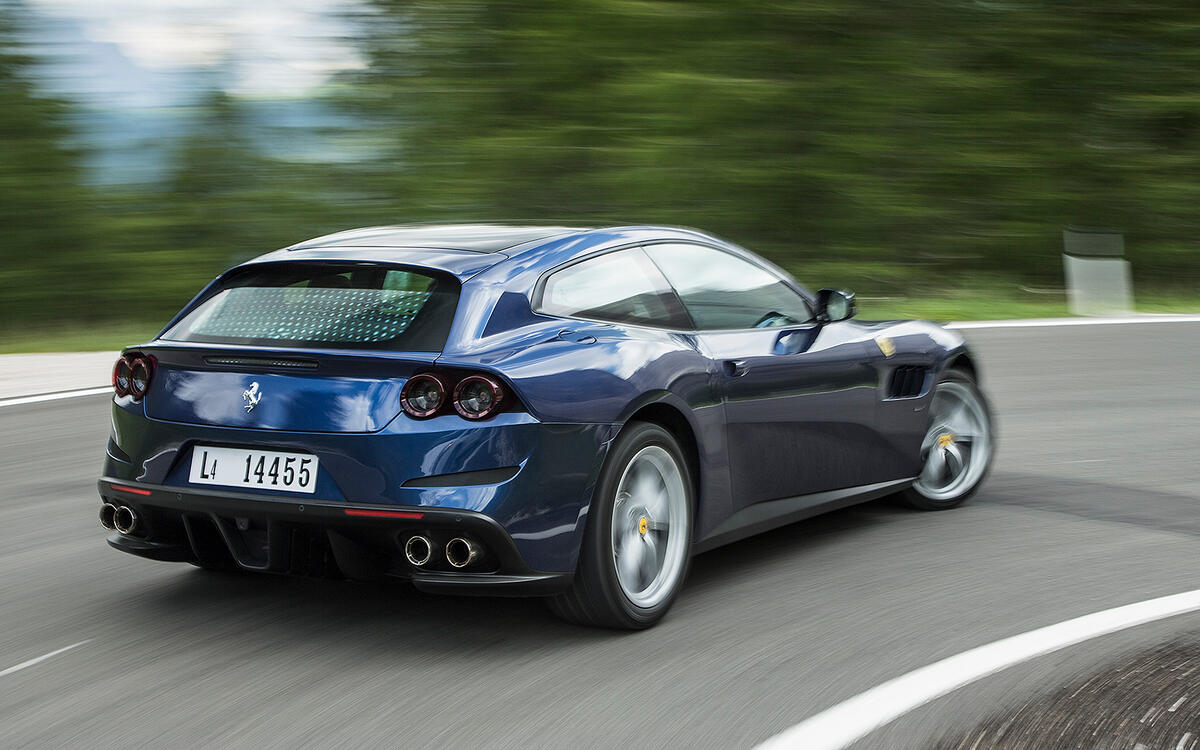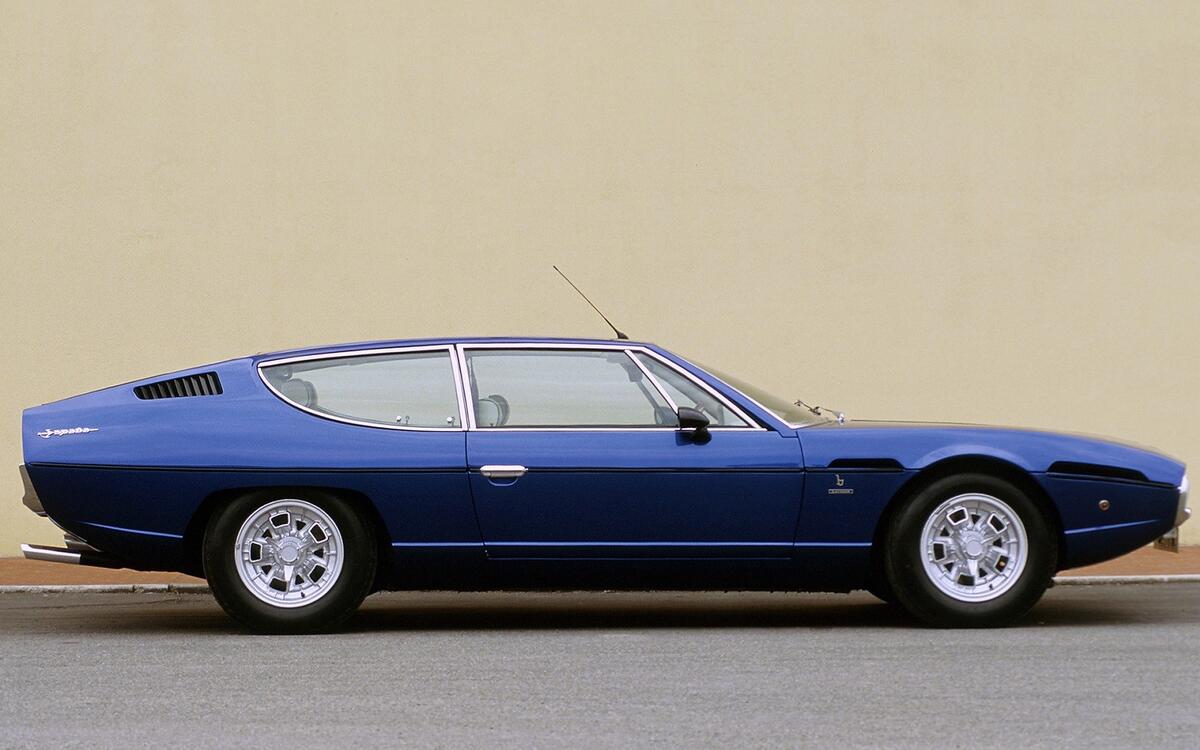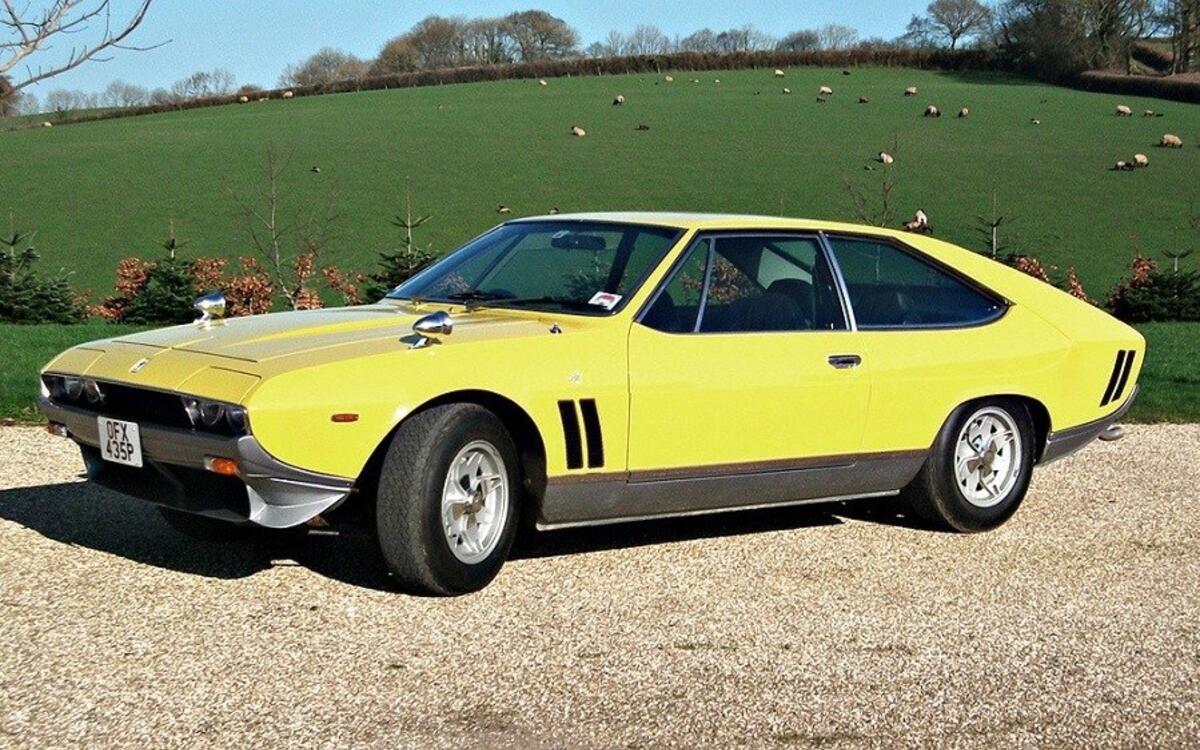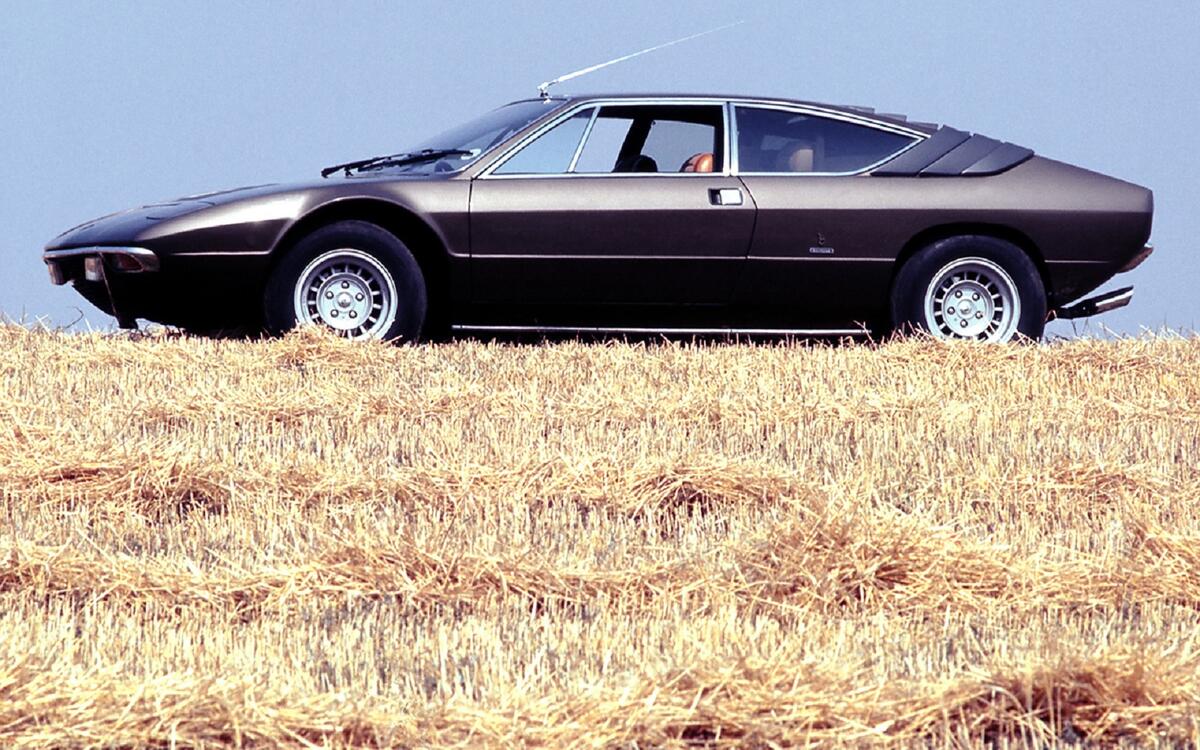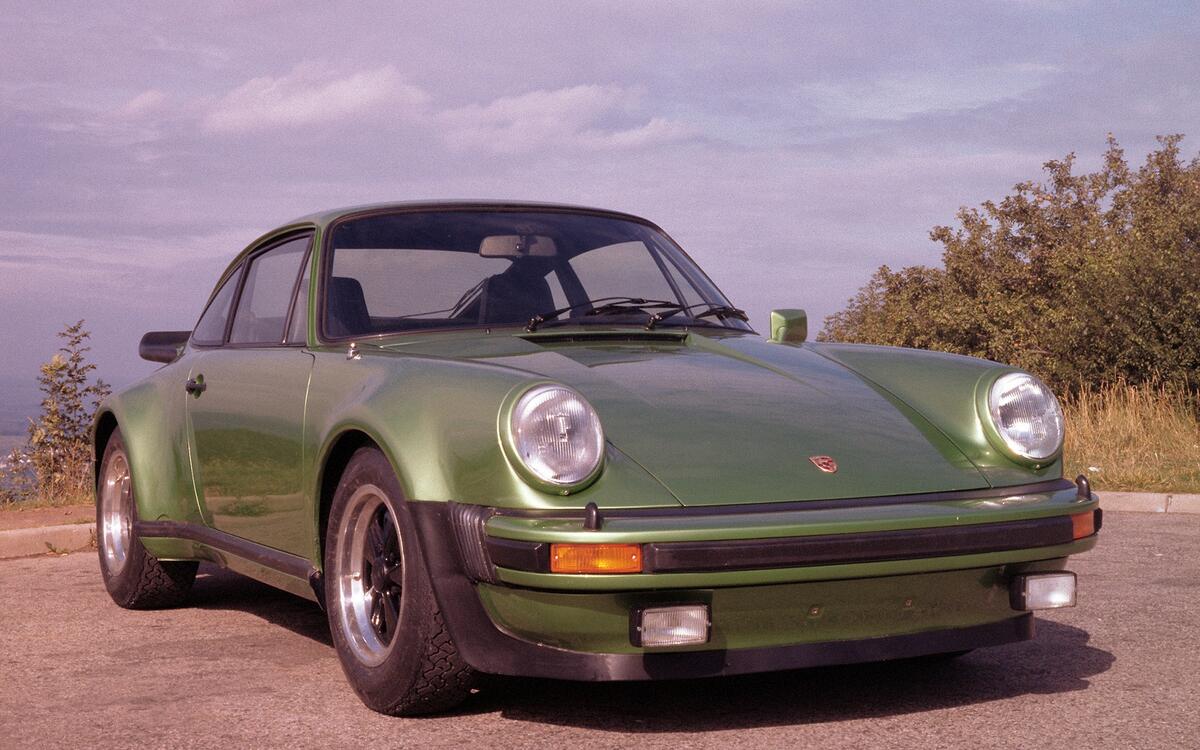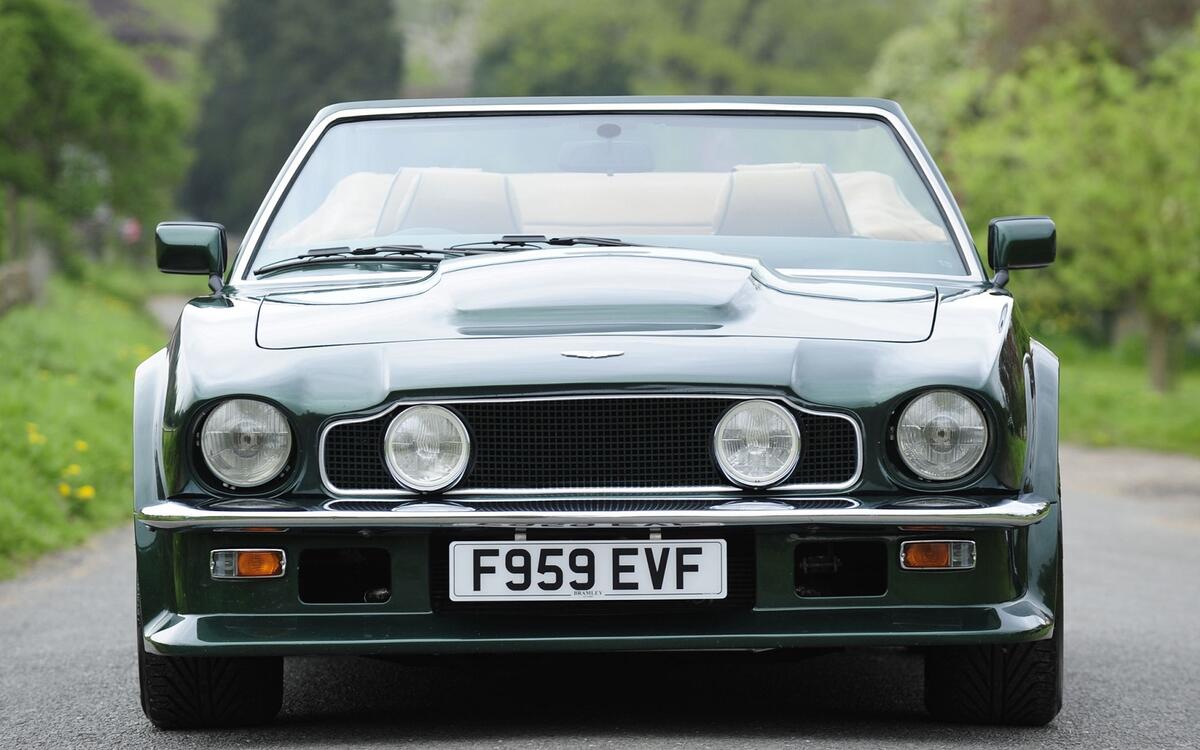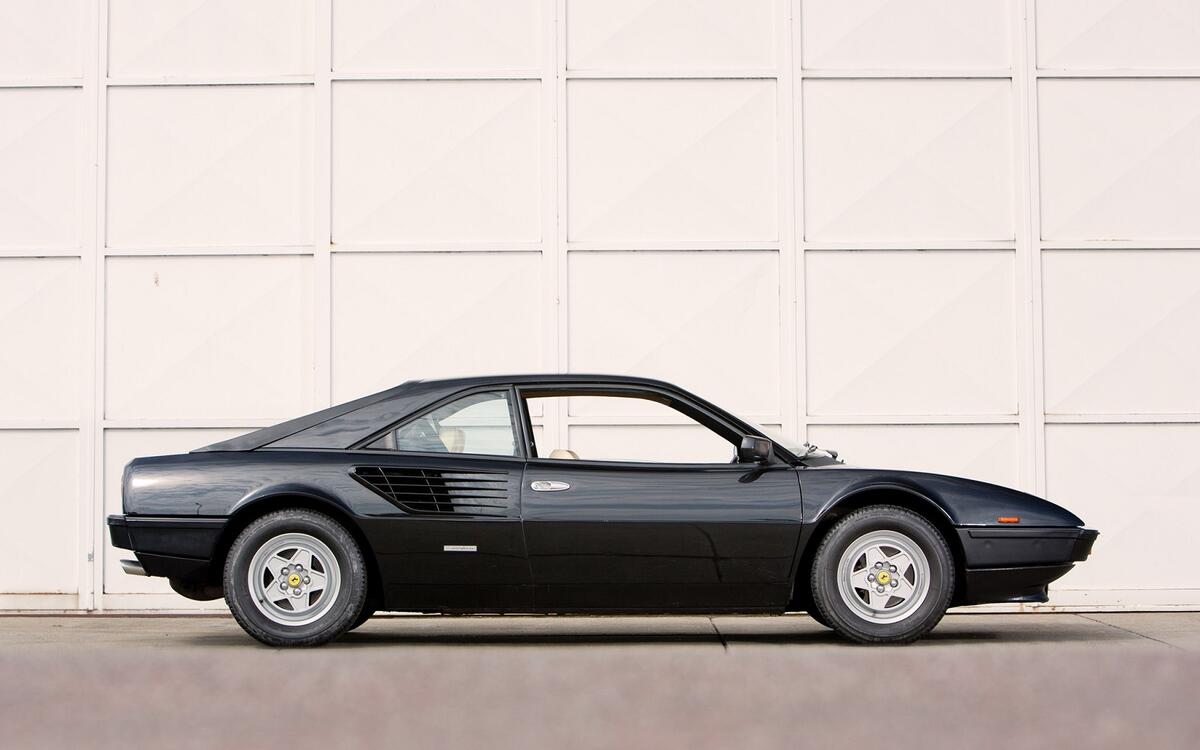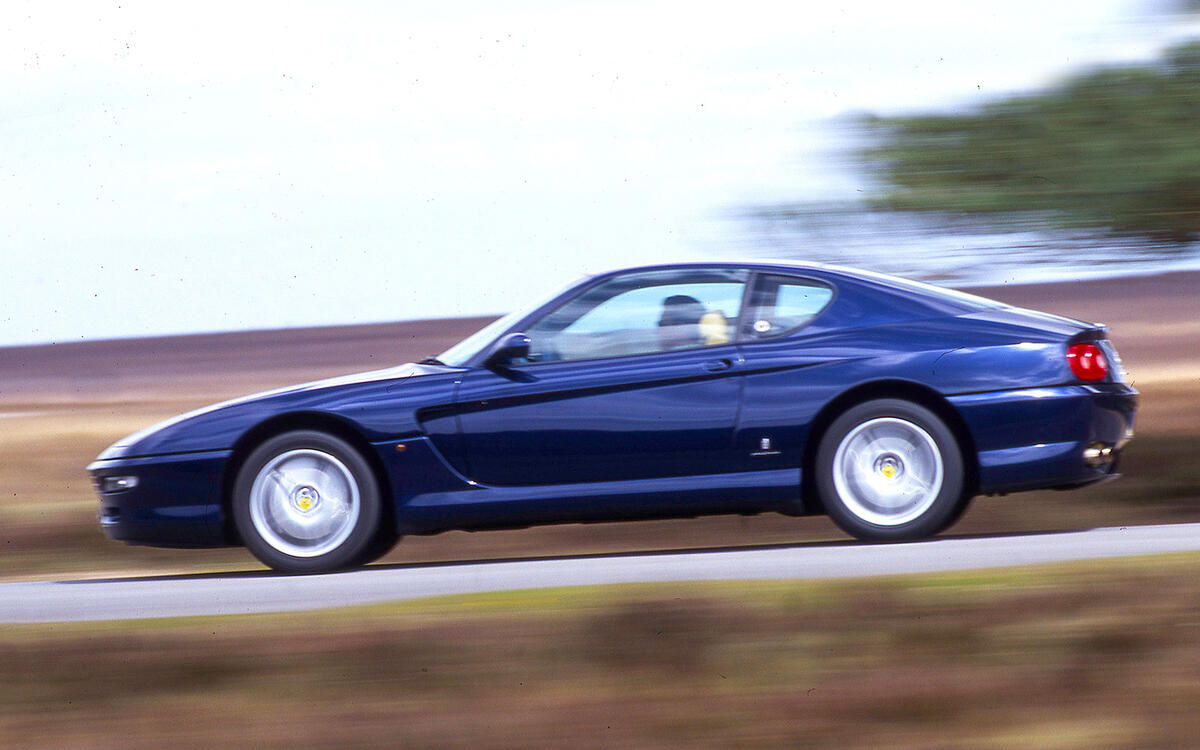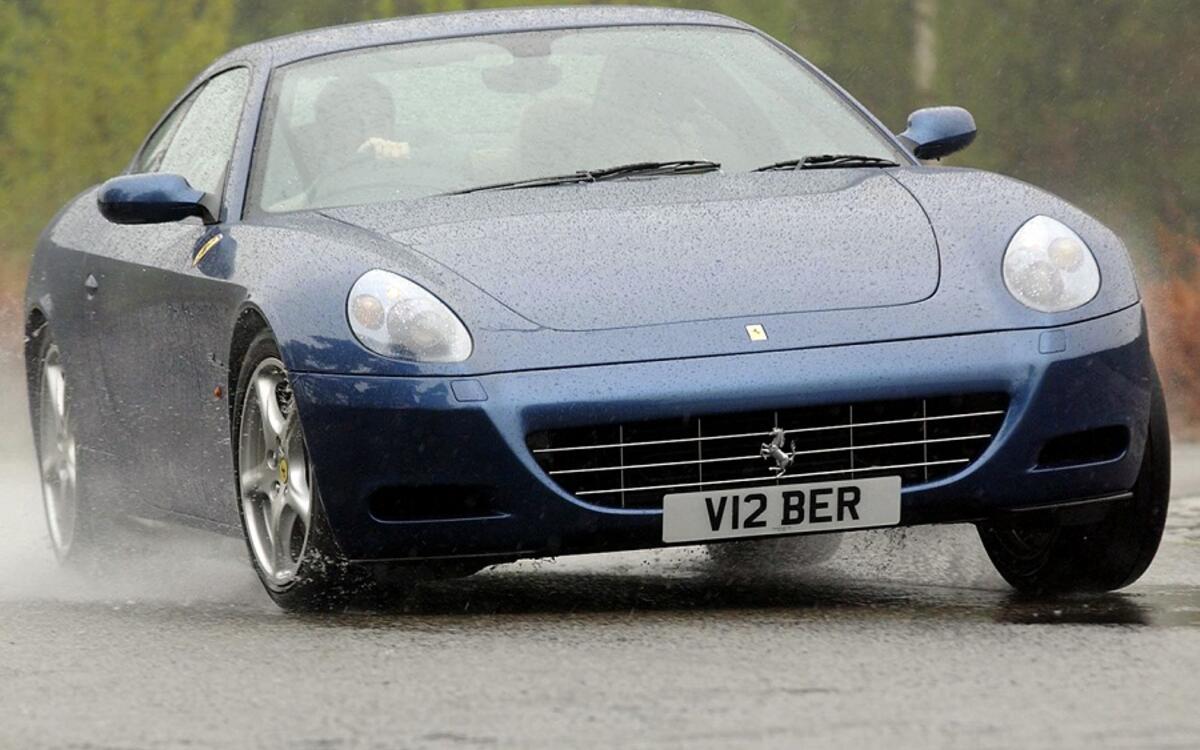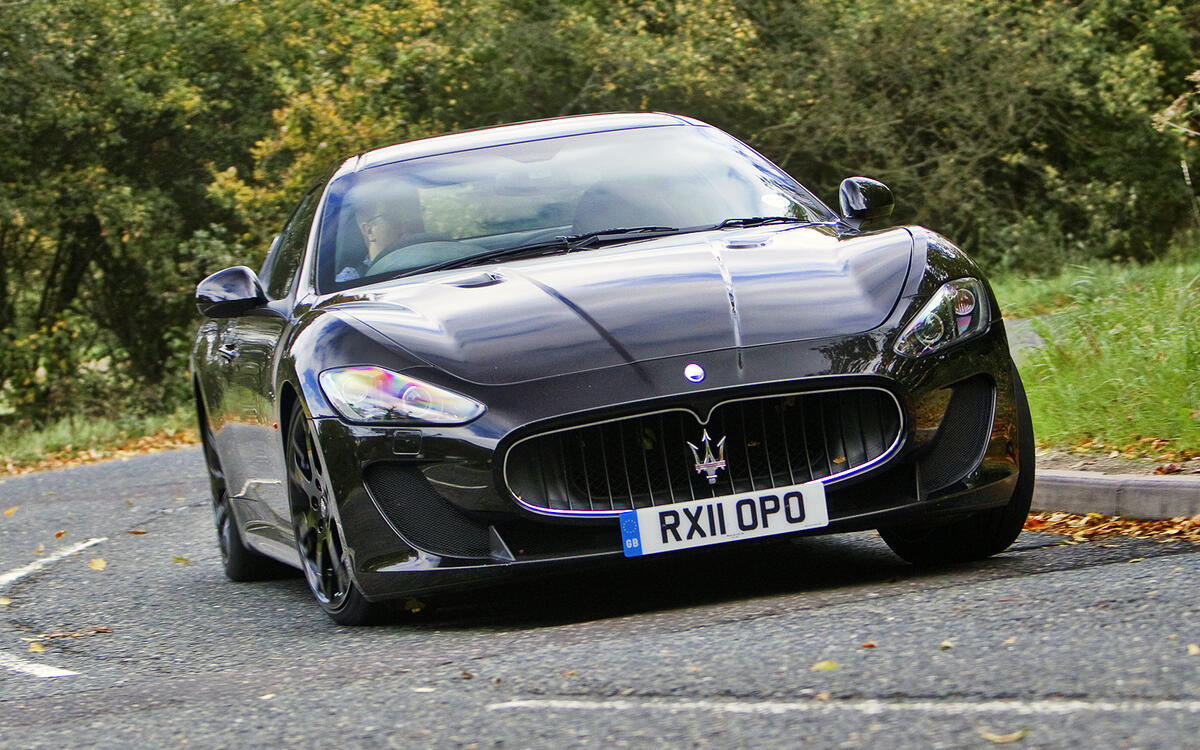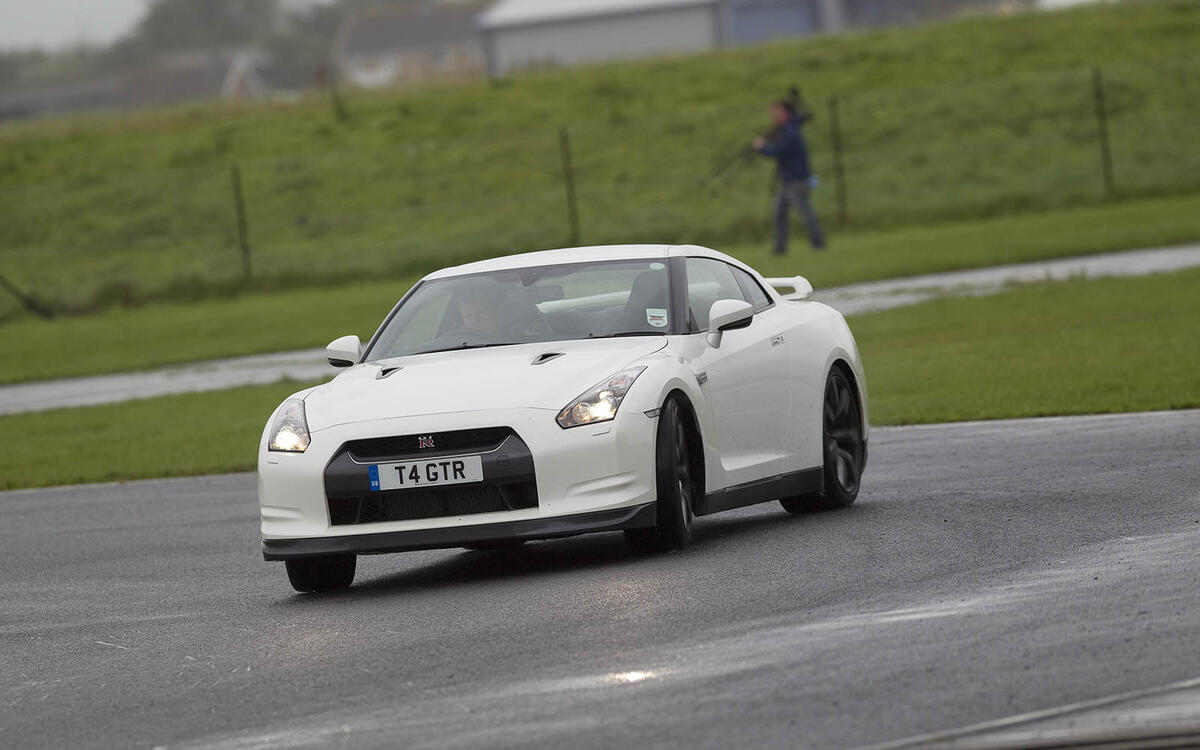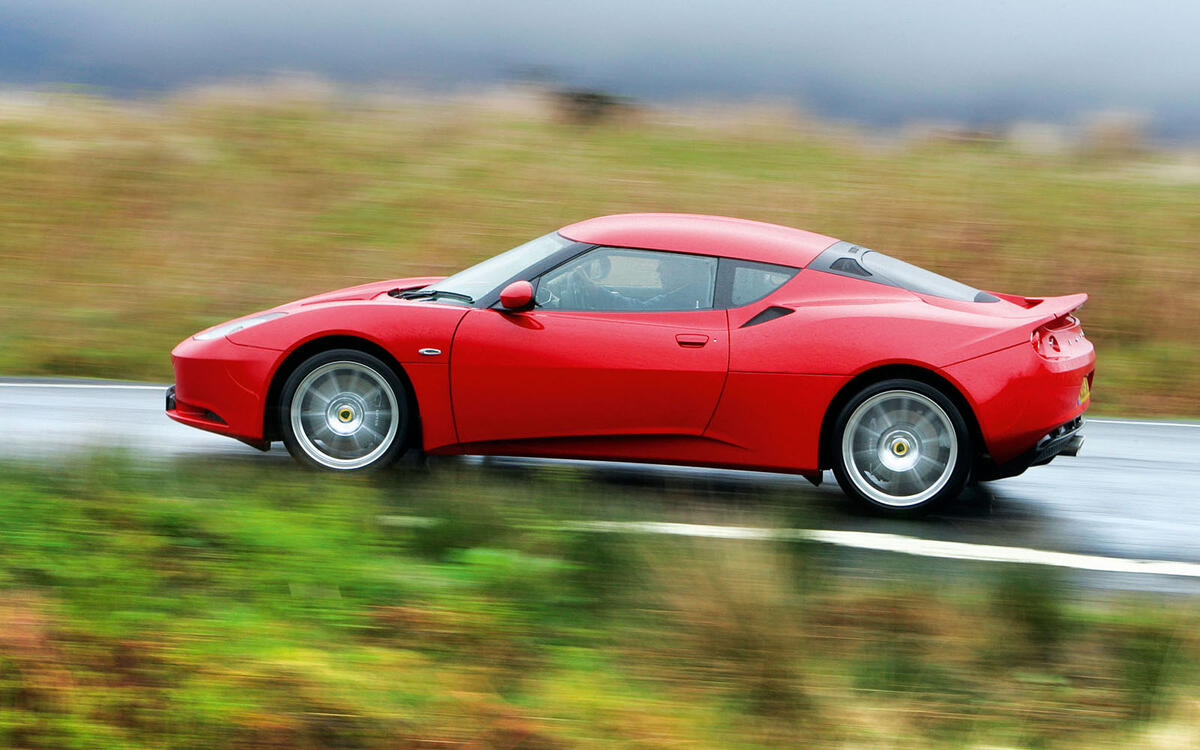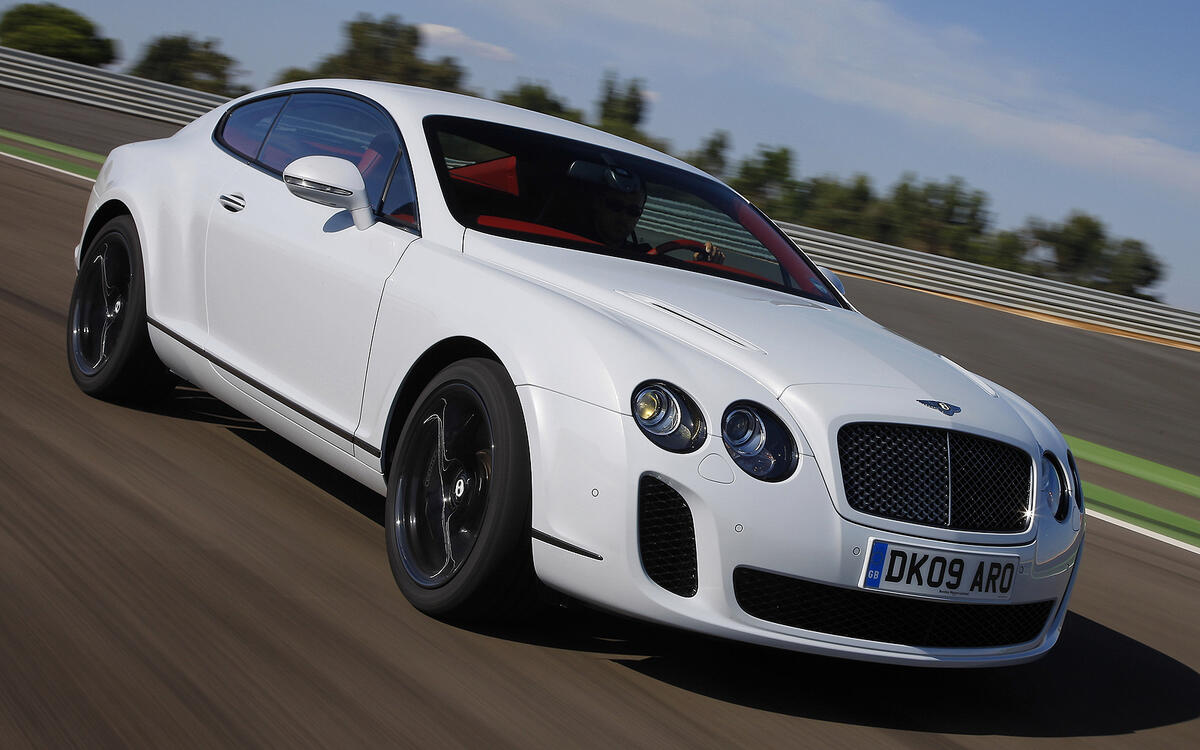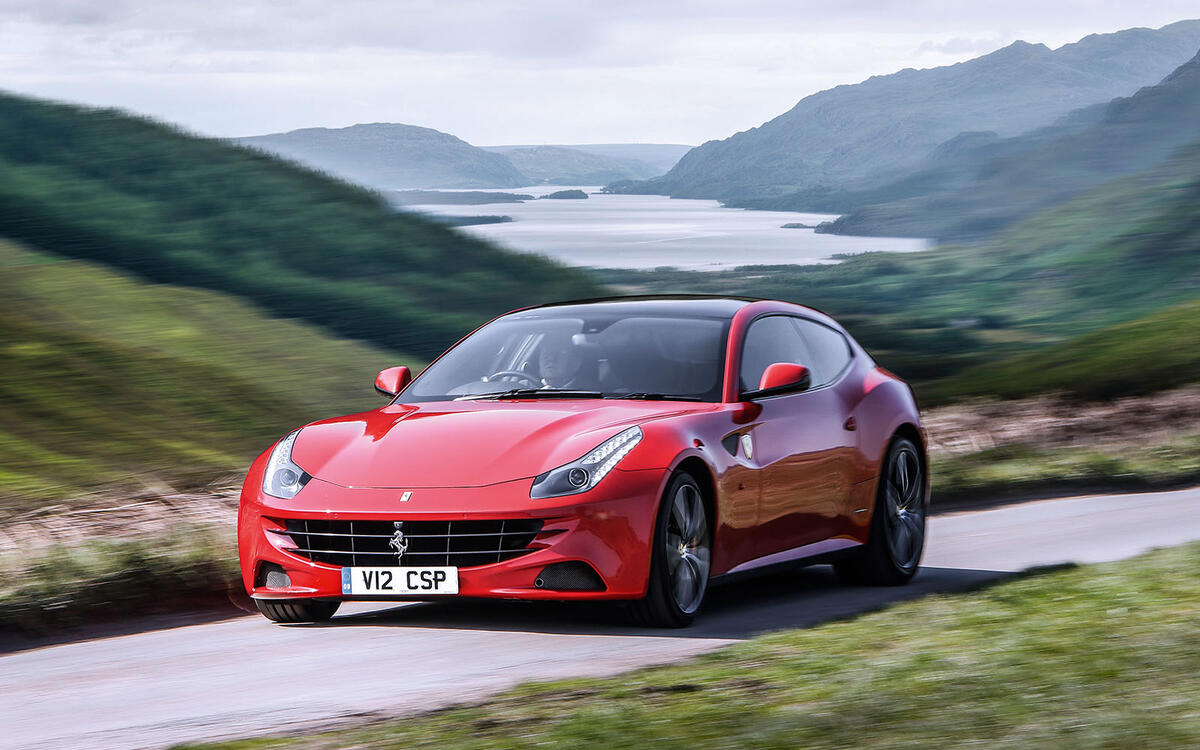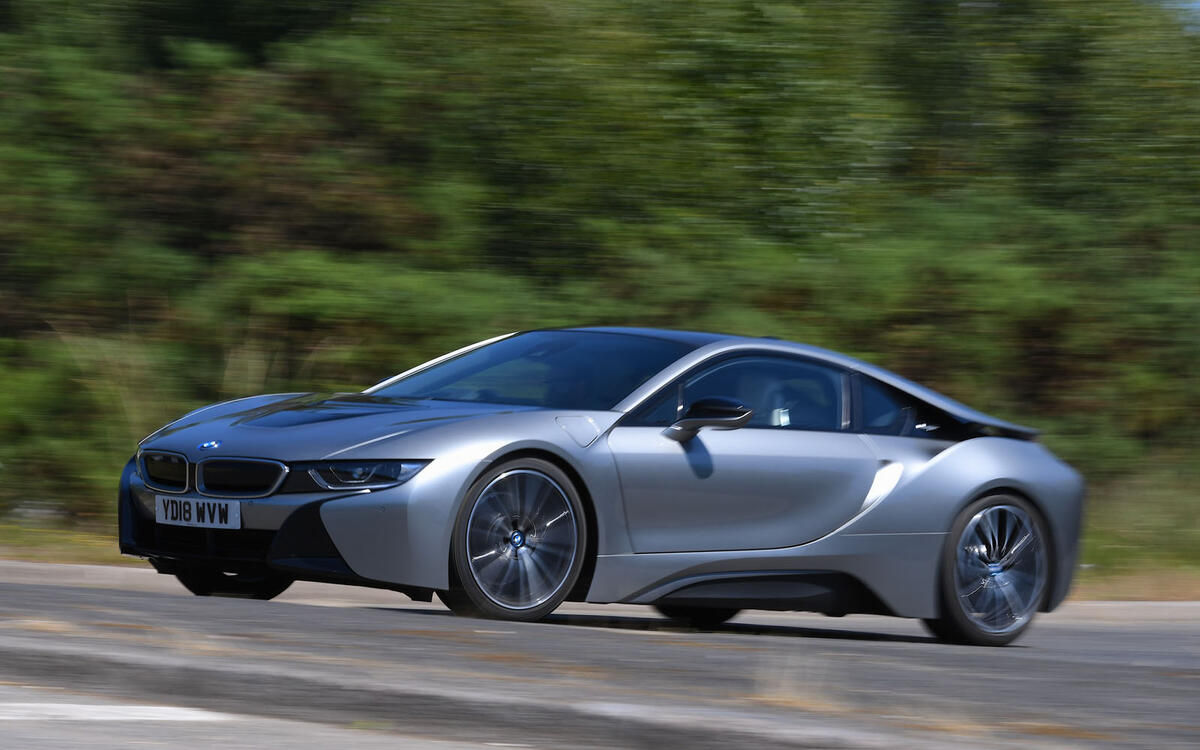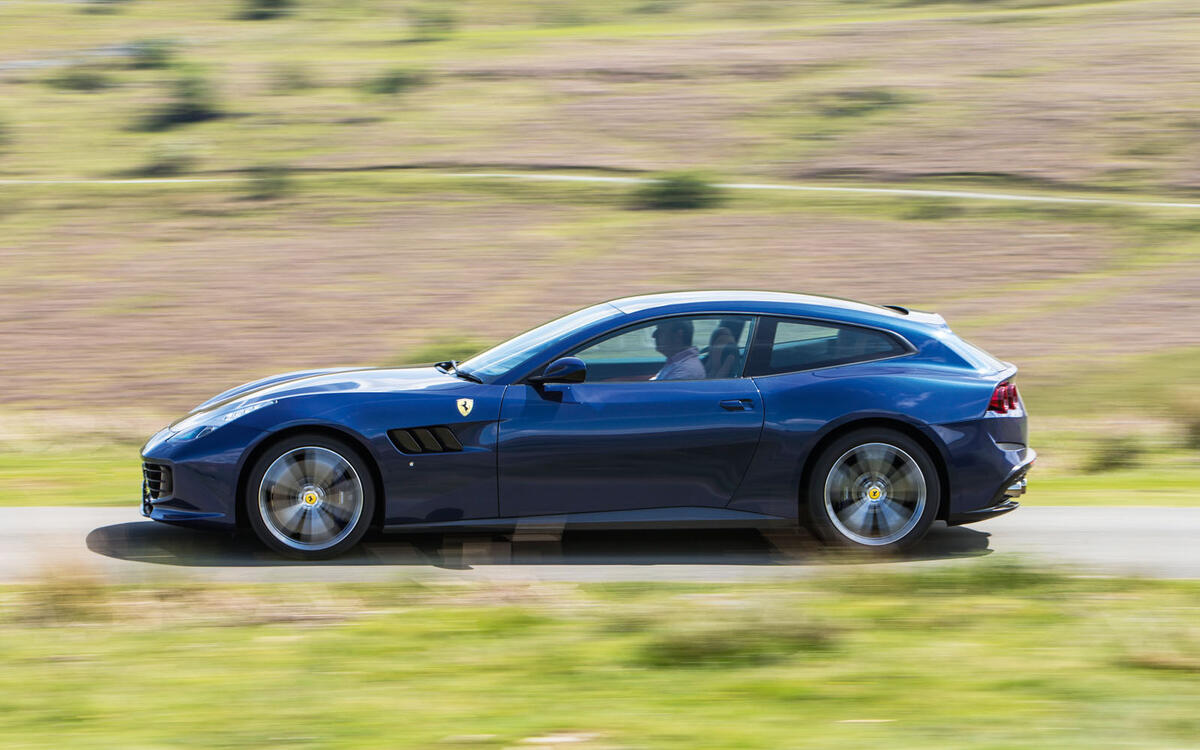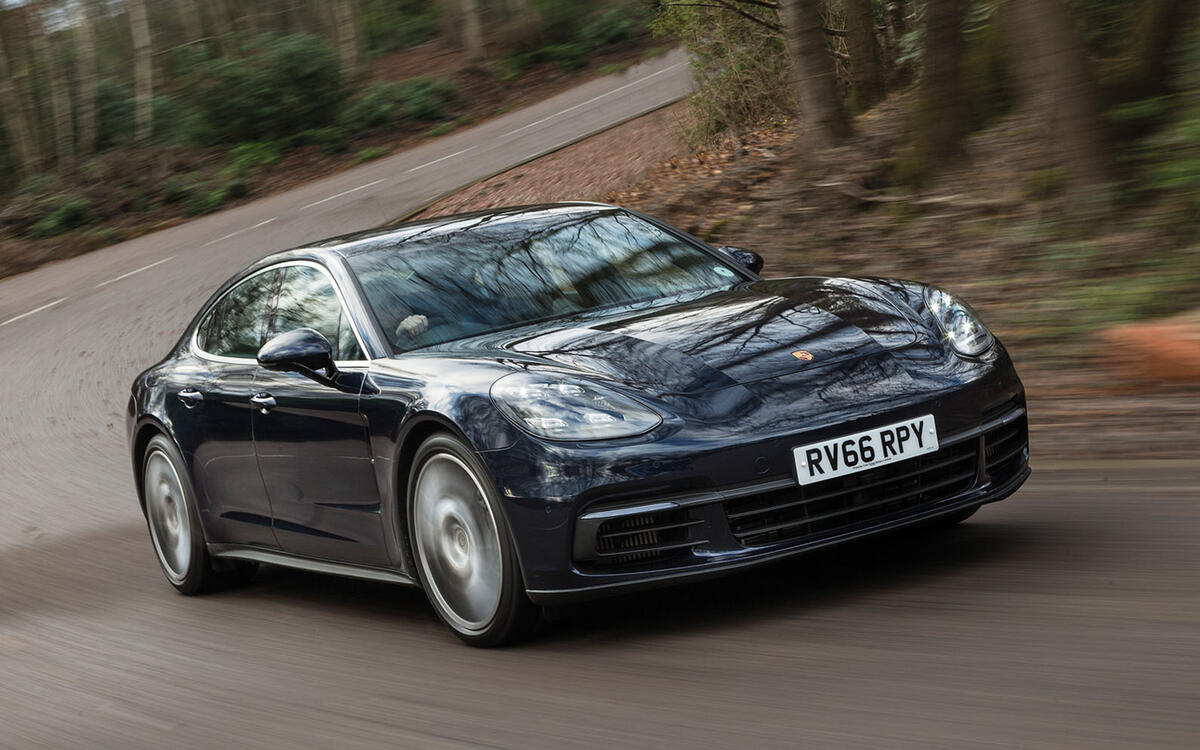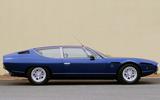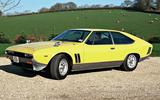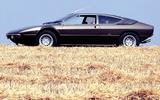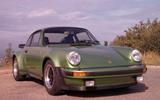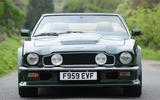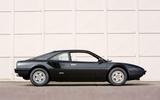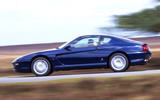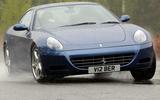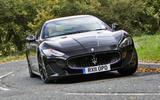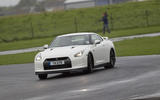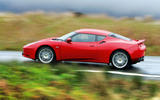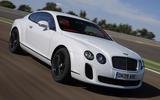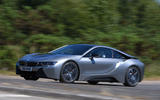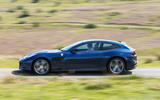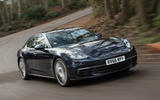 Slide of
Slide of
Most supercars are two-seaters.
However, there’s a long tradition of four-seat supercars and plenty offer more practicality than you’d imagine in cars where speed and handling are the main focus. We’ve gathered together the best four-seater supercars through the years and listed them chronologically:
Slideshow story - click right-hand arrow above to continue
 Slide of
Slide of
Lamborghini Espada (1968)
Styled by Marcello Gandini and following similar lines to the Marzal concept car, the Espada showed Lamborghini had ambitions beyond just upsetting Ferrari’s supercar dominance in the 1960s. Its huge proportions leant the interior a spacious cabin with room in the rear to carry a pair of adults, while a large boot made this a car you could cross continents in easily.
Being a four-seater did nothing to hinder the Espada’s appeal to Lamborghini’s jet-set customers and owners included Paul McCartney, the Shah of Iran and, more recently, Jay Leno. Its ability to carry people and eat miles is matched by handling that’s wonderfully agile and belies the car’s size.
 Slide of
Slide of
Iso Lele (1969)
Iso made its name with the Grifo as a rival to the likes of Ferrari and Maserati, but the Lele was aimed at broadening the small Italian maker’s range and appeal. It used the same formula of an Italian design with American V8 power. Initially, the engines came from General Motors, though the last few Leles had Ford motors.
Either way, the Lele was a handsome and bold car for the time with styling by Gandini and a large cabin with ample seating for two in the back. Those who bought a Lele were impressed with its ability to hold a family and luggage, but only 317 Leles made it out of the factory. A combination of a limited market plus the 1973 fuel crisis ended the Lele and Iso.
 Slide of
Slide of
Lamborghini Urraco (1972)
In true Lamborghini style, the Urraco was primarily concerned with stunning looks rather than making the most of its rear seat space. The result is a car where anyone clambering into the back will need to be very lithe and have short legs. You may also find yourself being slowly baked due to the large rear screen just behind your head.
The original P250 model was too slow and quickly replaced by the more powerful P300 with 265bhp. It delivered 161mph and 0-60mph in 7.4 seconds, but the Urraco remained an acquired taste and only 710 were sold during its seven-year life.
 Slide of
Slide of
Porsche 911 Turbo (1975)
Pick any year from 1975 onwards and you’re likely to find a Porsche 911 Turbo in the sales charts. It’s been a perennial supercar benchmark ever since that first one chirruped its way into the minds of fast car lovers and made the buying decision all the easier to justify by retaining the four seats of the standard model.
While that first Turbo quickly gained a reputation for needing quick hands to cope with its desire to oversteer, the model has been refined over the years to the point it’s at now. Choose the latest Turbo and you have a car that will top 200mph, pass 60mph from rest in 2.9 seconds and tootle to the shops with the family just as readily.
 Slide of
Slide of
Aston Martin V8 Vantage (1977)
Aston Martin’s V8 had been around since 1972, but when it introduced the Vantage in 1977 it was hailed as the UKs’ first supercar. There were no exotic mid-engined shenanigans here, just a whopping great 438bhp 5.3-litre V8 and 400lb ft of torque. It also kept the rear seats of the base V8 version, so you could whisk the family along at speeds up to 170mph.
As with all Astons of the period, the cabin was decked out in the finest wood, leather and Wilton, including the small rear seats. For those who found all of this just not quite exclusive enough, Aston also offered the open-top Volante model if you wanted to blast those in the back with fresh air.
 Slide of
Slide of
Ferrari Mondial (1980)
Not Ferrari’s first mid-engined four-seater, the accolade for that going to the Dino 308GT4, but the Mondial was a success. Clean styling outside were matched by a cabin that could hold four adults despite the engine sitting between the rear axle and back seats. It helped the engine was transversely mounted and the Mondial has a lengthy wheelbase to cope.
At the time of its launch in 1980, 0-60mph in 7.1 seconds was decent and so was the 145mph top speed. Ferrari improved performance steadily over the Mondial’s 14-year life and added a convertible version that retained the four-seat layout.
 Slide of
Slide of
Ferrari 456 (1992)
Ferrari brought its front-engined GT format into the modern age with the 456. It may have had hints of the glorious Daytona in its styling, but this was very much a V12 coupé for those with broader demands than just its 186mph top speed. This was attested to by the 456’s four-seat layout and rear pews able to cope with a growing family.
The back seats are not quite generous enough for adults to travel longer distances, but the 456 is a Ferrari you can use every day and cover big miles in. Many were specified with the automatic gearbox for this very reason, but it’s worth seeking out one of the rarer manual versions for the best of both the touring and sporting worlds.
 Slide of
Slide of
Ferrari 612 (2004)
The 612 was the last of the big rear-wheel drive four-seat coupés from Ferrari. After this, the firm shifted to four-wheel drive for the FF, so the 612 represents the last of a dynasty stretching right back to the 1960s. While it may not have the outright traction of its descendants, the 612 remains a wonderful choice for those wanting the thrill if V12 Ferrari ownership but need the extra seats.
There’s not shortage of space in the 612’s back seats as the deeply scooped-out buckets provide ample support and comfort on longer trips. There’s even decent knee space and, thanks to Ferrari’s tailored approach, there was a variety of finishes and options to make the rear compartment as special as the front one.
 Slide of
Slide of
Maserati GranTurismo (2007)
The Maserati GranTurismo shares its platform with the Quattroporte saloon and that explains why this low-slung coupé is one of the most spacious four-seat supercars out there. While the swooping roof line means headroom in the GranTurismo is not as good as in the Quattroporte, it’s still more accommodating than most rivals.
Maserati has also thought about rear passengers than most others as there are rear windows they can see out of, cupholders and a fold-down armrest. As for the individual chairs themselves, they are wide enough for adults to remain comfortable all day and supportive for when the driver decides to us the V8 motor’s full noise.
 Slide of
Slide of
Nissan GT-R (2007)
We could choose any number of Nissan Skyline or GT-R models to fit the bill here, but let’s go with the current R35 model. As a car that bucks the trend in many ways in the supercar arena, the GT-R’s rear seats are another example of how it shows many rivals you don’t have to ditch all notions of versatility or usability in the pursuit of speed and superb handling.
If anything, the GT-R is possibly the easiest four-seat supercar to live with thanks to its decent rear passenger accommodation and boot. Okay, it’s no Volvo estate, but then it can also lap the Nürburgring in less than 7 mins 30 sec. That should get the kids to school on time.
 Slide of
Slide of
Lotus Evora (2009)
Lotus has a long history with four-seaters going right back to the Elan +2, so the Evora is the latest in a long line. Like its predecessors, it still places handling and performance just above practicality, so the rear seats are better suited to children than grown-ups. Even so, the flat-ish bench provides sufficient room for the school run and trips further afield.
The rear seat may not be a deciding factor in many buyers choosing the Evora over, say, a Porsche 911, but they do add another facet to this car. Even with the rear seats occupied, you’ll enjoy superb performance thanks to the 3.5-litre V6 that even in its most basic form serves up 276bhp to give 0-60mph in 4.8 seconds and a 163mph top whack.
 Slide of
Slide of
Bentley Continental GT Supersports (2009)
Virtually any Bentley Continental GT would qualify as a four-seat supercar, but let’s plump for the Supersports as one of the quickest of the bunch. Like its siblings, those sat in the back of the Supersports are treated to soft leather with hand-stitching, usually with a distinctive diamond cross-hatch design.
While adults might find the rear seats of the Bentley a little snug, there’s more than enough room for kids. It makes the Supersports one of the quickest ways to get the children to school possible thanks to this 621bhp Bentley’s 0-60mph time of 3.7 seconds and 204mph top speed.
 Slide of
Slide of
Ferrari FF (2011)
The Ferrari FF is one of the company’s grandest tourers ever and is so proud of its four-seat cabin it even references it in the name. ‘FF’ denote four seats and four-wheel drive, so this is about as close to a family car as the Italian maker gets while sticking to its sports car roots.
Shooting brake styling means the FF is not just some nod to practicality either as there is room in the rear for two adults. The twin bucket seats are as sumptuously appointed as those in the front and hold their passengers just so, which is vital with a car that hot 208mph. For even greater versatility, the centre section of the rear seat can be folded down to augment the 450-litre boot if you want to carry longer items, such as skies when making the most of the all-wheel drive in winter conditions.
 Slide of
Slide of
BMW i8 (2014)
As if launching a new supercar from its i sub-brand with hybrid technology wasn’t enough for BMW, it made the car with four seats. It was clear from the start, the German company wanted this to be a supercar people would use all the time rather than keep for Sunday best, so practicality was essential.
The rear seats are able to cope with two adults, though getting in and out requires a certain amount of technique and dexterity. Kids will find it much easier, though they do sit quite low in the cabin with a minimal view out, so best to check if your children suffer from car sickness before setting off.
 Slide of
Slide of
Ferrari GTC4 Lusso (2016)
Ferrari replaced its FF with the GTC4 Lusso, a car that takes its name from some of the most glamorous models from the firm’s back catalogue. In that case, it had better be something special and that’s exactly what this four-seat machine is.
The breadvan styling has notes of the 456 about it, as well as an air of the 250GTO that coined the Breadvan name and raced at Le Mans. This styling means the driver can easily travel with three passengers and luggage, or you could fold down the rear seats to free up a very generous 800-litres of cargo space. Imagine the looks you’d get taking the garden rubbish to the refuse tip.
 Slide of
Slide of
Porsche Panamera Turbo (2017)
Porsche was clearly alert to criticism of the original Panamera’s slightly cramped rear quarters and has addressed this in the latest version. Using scallops in the roof and a longer wheelbase has freed up vital extra space to adults can sit back there in comfort. Each individual seat in the back looks similar to the ones in the front, so you get plenty of support and comfort.
Running down the centre console between the rear seats in the Executive model are controls for the seats’ adjustment. You can also add in the Entertainment package for the complete cinema experience. It almost makes it worthwhile giving up the driver’s seat, though with 542bhp on tap from the Turbo’s engine we’ll stick to up front.
Supercars aren't just two-seat wonders: we count down the best supercars with space for four
Advertisement

